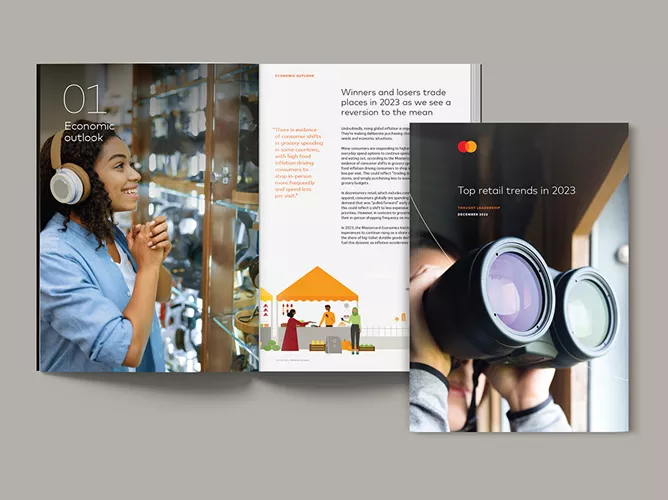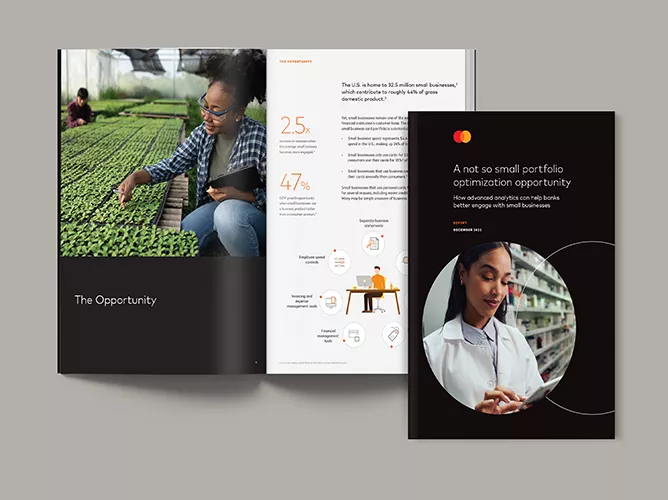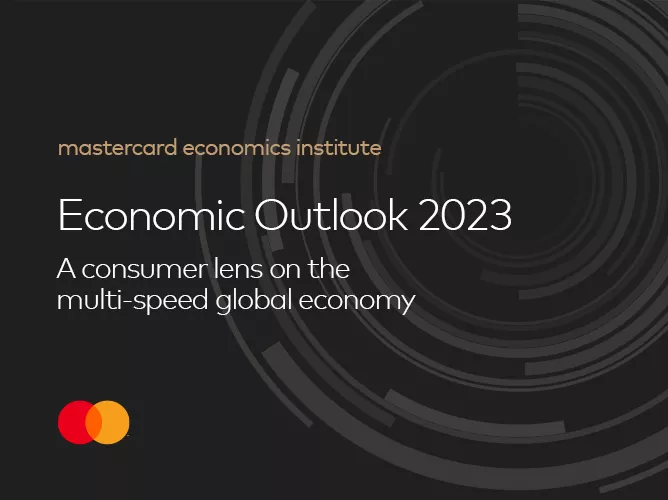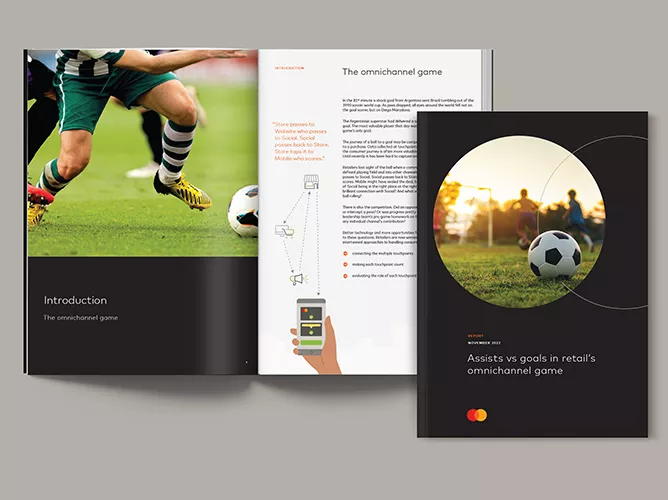December 2022 | By Michael Calamari, Michelle Meyer and Evan Voshell
How can marketers help their brands stay competitive and navigate the current economy? Competition for consumers’ wallets is heating up, and according to Mastercard Economics Institute’s Economic Outlook 20231, rising prices have consumers adjusting their appetite for discretionary goods.
For savvy retail marketers, the economy can be an opportunity to move their brand forward. Start by asking these five questions.
1. Which elements of the economy are important to consider when we’re looking at our marketing strategy?
Pricing power, labor costs and shifting consumer preferences for experiences versus goods are only a few economic factors that are top of mind for retailers in 2023. The ability to hire and retain workers in the retail space remains challenging and threatens customer experience at brick and mortar. Rising input costs–labor is a key one–require a shift in top-line prices, though there may be a limit to the consumer’s ability to accept higher prices, especially as preferences shift.
As marketers look to create efficiency across the customer journey, considering these challenges together may bring strategies into focus. For example, digital and omnichannel experiences allow for greater customer reach while minimizing economic burdens for both consumers and retailers. In fact, Mastercard Economics Institute’s analysis based on 12 major economies suggests that having an omnichannel presence provided a 6-percentage point lift in retail sector sales through 20222. Consumers can be spared paying the fuel costs of making the journey and retailers reduce risk of negative customer experience caused by staff shortages by driving traditional brick-and-mortar customers to digital channels.
Key point for marketers
Leverage digital and omnichannel to de-risk labor shortages and reduce costs while simultaneously evaluating price elasticity of product mix
2. How is the economy impacting our customer engagement strategy?
In the face of higher prices and the current inflationary environment, some consumers may respond by `trading down’ brands and stores, according to Mastercard Economics Institute’s Economic Outlook 2023. Consumers who previously purchased luxury brands might shift to lower-priced options such as discount or store brands. How pronounced that shift becomes is likely dependent on the relative price differences in that category and the degree of consumer budget strain.
When it comes to durable goods–such as household appliances or electronics–the Mastercard Economics Institute expects that consumers are likely to continue to shift away from these items. Generally speaking, demand for these types of big-ticket/housing items was `pulled forward’ early in the pandemic, and any potential shift could reflect a return to normal spending habits. Active monitoring of conversion rates for various customer personas enables marketers to get a handle on shifts in consumer engagement. Conversion and average order value for loyal, contactable, known and first-time unknown customers are helpful indicators of how each customer persona is moving through the sales funnel.
Any decrease in purchases from first-time buyers or in ongoing engagement might be an indicator that your engagement strategy needs updating. Marketers might test strategies such as triggering an offer for a percentage off earlier in the purchase process or making an offer available to more groups of customer personas. Testing along the way can help you understand whether increasing the percentage amount yields the desired results.
Key point for marketers
Closely monitor conversion rates for each customer segment to look for early financial warning signs
3. Do we understand where demand is and the type of consumer we want to reach?
If the economic environment were to shift, so too would the consumer. Understanding the shifts happening beyond the four walls of your store is key to effectively targeting different customer segments. Equipped with that information, retail marketing executives can examine their customer segments to determine where to focus their marketing budget.
It may prove most beneficial to focus your marketing dollar investment on winning share of visits and share of wallet with your existing customer base. Or, if your existing customer base is well protected, it may make sense to invest in growing your customer file to maintain momentum. Ensuring that your personalization and loyalty platforms are nimble and agile will go a long way to yielding more returns.
Key point for marketers
Monitor sales productivity and unit volume from your existing customer file versus prior years and pivot marketing investment accordingly
4. Do we understand the mix of products to offer and how to best manage inventory?
Marketing execs who want to improve customer engagement will be looking to integrate CRM and store inventory data into digital channels. Inventory needs to be integrated to ensure the supply matches the demand generated and while inventory isn’t typically in marketing’s purview, it will have an impact if there are limited goods to be sold. In this economic environment, where supply chains have been impaired, managing inventories has become more challenging especially in the face of shifting preferences from the consumer.
For example, when the customer is expected to do a curbside order or when the goal is to drive more in-store experiences, data integration enables the brand to prioritize products that are in stock at local stores over those that require shipping. At checkout online, providing a digital display that shows a customer’s rewards balance or triggering/suppressing discount offers based on inventory of product that is in a customer's online shopping cart, may incentivize larger baskets. Finally, leveraging your app to drive an omnichannel experience in store and helping customers locate certain items or “shop the look” can allow for better mapping of the customer journey and better servicing of a given customer’s needs.
Key point for marketers
Ensure product recommendation strategies are dynamic and constantly refreshed with local inventory and other contextual data
5. Are we effectively rewarding our loyal customers in a potentially challenging economic climate?
In the current economy, marketers will need to be diligent about keeping their loyal customers. They will need to monitor the rates of customer acquisition, churn and digital conversion as signals of their brand’s financial health. Many marketing executives will look to re-tool their loyalty propositions to increase their effectiveness at driving sales.
With appropriate analysis, a brand can perform optimally even in a challenging economic environment. Testing is an essential tool for tracking the effectiveness of various triggers that are automated in a marketing cloud or CRM in response to an action a customer takes. How are various communication frequencies, reward types and schemes performing when compared with the pre-pandemic period? Marketers can understand whether consumers are valuing different rewards and benefits than they did before the pandemic. With those metrics in hand, marketers can uncover what drives that performance.
Key point for marketers
Look to your learnings library from past economic downturns for inspiration about what will drive continued loyalty in the current climate
To learn more about economic trends ahead, read Mastercard Economics Institute’s Economic Outlook 2023.
Michael Calamari is vice president, Enterprise Strategy, at Mastercard Services
Michelle Meyer is chief economist, U.S., at the Mastercard Economics Institute
Evan Voshell is vice president, Segment Management, Mastercard Services
2Mastercard Economics Institute, Economic Outlook 2023












